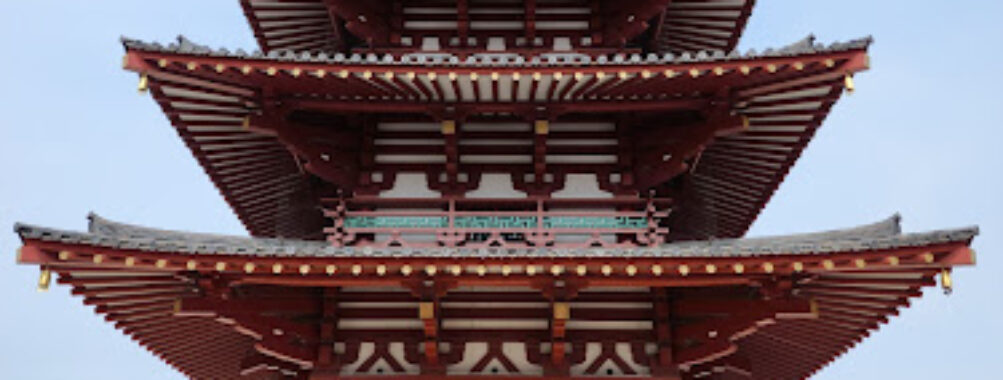
Shitennō-ji
Description
Shitennō-ji stands as Japan’s pioneering state-built Buddhist temple, a remarkable testament to the country’s spiritual heritage since 593 AD. Prince Shotoku, a pivotal figure in early Japanese Buddhism, founded this architectural marvel that continues to captivate visitors with its profound historical significance. The temple complex showcases classical Japanese Buddhist architecture at its finest, featuring an impressive five-story pagoda that pierces the Osaka skyline.
As you wander through the temple grounds, you’ll discover a harmonious blend of restored structures that maintain their original 6th-century design elements. The temple’s name honors the Four Heavenly Kings of Buddhism, reflecting its deep spiritual roots. Beyond its religious significance, Shitennō-ji serves as a peaceful urban sanctuary where ancient traditions seamlessly merge with modern life.
Key Features
• The iconic five-story pagoda, reconstructed to match its original design
• Traditional Japanese garden featuring serene ponds inhabited by countless turtles
• Historical Buddhist statues and religious artifacts
• Central Golden Hall (Kondō) housing important Buddhist images
• Outer temple grounds that are freely accessible to visitors
• Inner precinct with multiple halls and cultural treasures
• Regular Buddhist ceremonies and rituals
• Educational displays about Prince Shotoku and early Japanese Buddhism
Best Time to Visit
Plan your visit during early morning hours to experience the temple’s serene atmosphere before the crowds arrive. Spring brings spectacular cherry blossoms to the temple grounds, while autumn treats visitors to vibrant foliage. The temple is particularly enchanting during traditional Buddhist festivals and ceremonies, typically held during significant dates in the Buddhist calendar.
Weather-wise, March to May and October to November offer the most comfortable temperatures and clearest skies. Summer months can be quite humid, though the temple’s shaded areas and garden spaces provide welcome relief. Early afternoon tends to be busiest, so consider a morning or late afternoon visit for a more peaceful experience.
How to Get There
The temple is easily accessible via Osaka’s efficient public transportation system. The closest subway station is Shitennoji-mae Yuhigaoka on the Tanimachi Line. From there, it’s just a short walk to the temple complex. You’ll find clear signage in both Japanese and English guiding you from the station.
If you’re coming from central Osaka, take the JR loop line to Tennoji Station, followed by a 10-minute walk. The temple’s prominent pagoda serves as an excellent landmark, visible from several blocks away. Local buses also stop near the temple grounds, making it convenient for those staying in different parts of the city.
Tips for Visiting
Remember to time your visit right – the temple opens at 9:30 AM and closes at 4:30 PM. The admission fee is 500 yen for the inner precinct, though the outer grounds are free to explore. Photography is permitted in most areas, but be mindful of ongoing ceremonies and respectful of worshippers.
Wear comfortable shoes as you’ll do quite a bit of walking around the expansive grounds. Some buildings require removing shoes before entering, so easy-to-remove footwear is ideal. Consider bringing a small towel during summer months – those pagoda stairs can be quite a workout!
Take time to appreciate the garden’s quiet corners, where you might spot turtles sunbathing or hear the gentle sound of prayer chants. The temple shop offers unique Buddhist-themed souvenirs and lucky charms that make meaningful mementos. For a deeper understanding, grab an English audio guide or join one of the occasional guided tours.
If you’re interested in Japanese Buddhism, visit the temple’s treasure house, which displays important historical artifacts. And don’t rush – the true essence of Shitennō-ji reveals itself to those who slow down and absorb its centuries-old atmosphere. Consider combining your visit with nearby attractions like the Tennoji Zoo or the modern Abeno Harukas building for a full day of exploration in this historic district of Osaka.
Table of Contents
Location
Places to Stay Near Shitennō-ji
Find and Book a Tour
Explore More Travel Guides
No reviews found! Be the first to review!